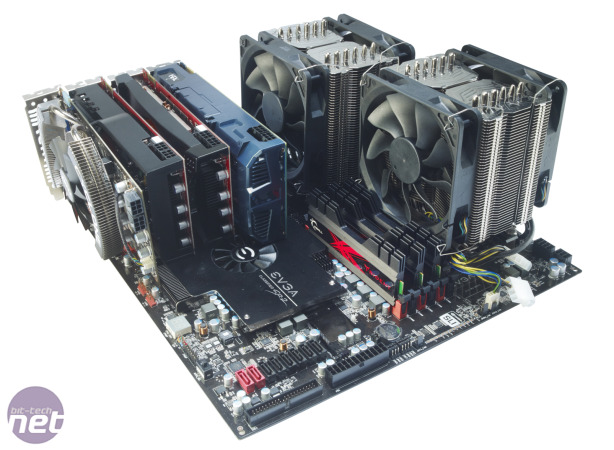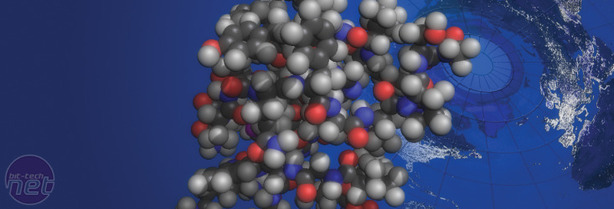Folding@home
Website: Stanford UniversityFolding@home is the most successful distributed computing application at the moment, starting off life on CPUs and then spreading to GPUs in recent years.
Folding is a client-based distributed computing application that simulates protein folding to aid our understanding of complex diseases such as Alzheimer's, Mad Cow Disease (BSE), CJD, ALS, Huntington's, Parkinson's disease, and many Cancers and cancer-related syndromes. To add some interest to the furthering of scientific and medical research doesn't hold any interest for you, Stanford also has team- and user-based leaderboards, so folding is also a competition.
There are various folding clients available, depending on what hardware and software you are running. To make the full use of the capabilities of the SR-2 we ran a combination of the SMP CPU client with the bigadv switch and four instances of the GPU3 client. The GPU clients were run on a quartet of 768MB Nvidia GeForce GTX 460s. These recently launched graphics cards are not only very fast at folding, but also very power efficient, cost effective and don't run as hot as their larger GTX 480 brethren, so can comfortably run 24\7 with the stock cooler.

Click to enlarge
The client downloads work units (aka 'projects') from Stanford, and each work unit is worth a certain amount of points. We then monitor how long the client takes to fold several per cent of a work unit and from this calculate how many points per day the client will complete.
You can join the bit-tech and Custom PC folding team (currently ranked sixth in the world) by using the team number 35947. Your contribution is valued.

For an explanation of what these numbers mean, head to the Performance Analysis page.

MSI MPG Velox 100R Chassis Review
October 14 2021 | 15:04









Want to comment? Please log in.